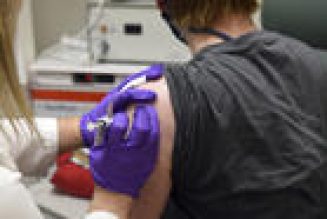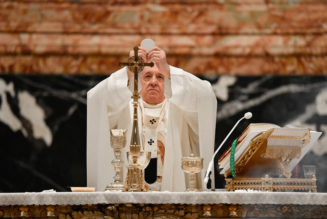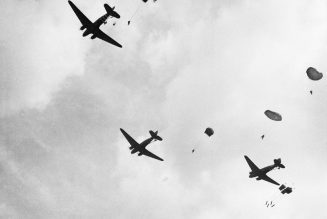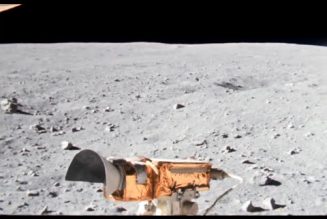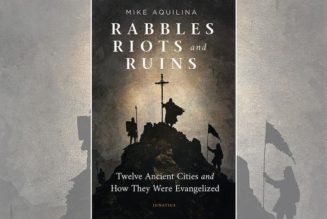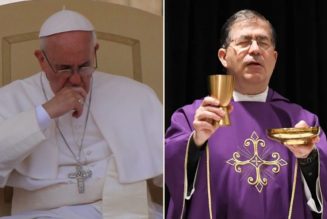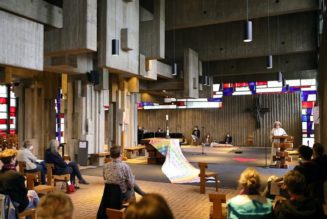
Exactly 100 years ago, on Nov. 11, 1921, thousands of soldiers, sailors, marines and ordinary citizens joined President Warren G. Harding and scores of dignitaries from throughout the United States and worldwide at Arlington National Cemetery for the dedication of the Tomb of the Unknown Soldier.
This Unknown Soldier was to represent and honor all those from every branch of the service who died in World War I but who were unable to be identified.
Imagine the thoughts going through the mind of Sgt. Edward Younger that day. He had fought and been wounded twice in France, then stationed with the occupation army in Germany. As the search to choose the Unknown Soldier progressed, Younger was among six soldiers sent to France to select this Unknown Soldier. On Oct. 24, 1921, an officer picked him from the group to go inside the chapel (some records say “city hall”) at Châlons-sur-Marne, where four caskets each held the body of an unidentified serviceman — one from each of the four major cemeteries for U.S. military. Younger was to pick one as the Unknown Soldier.
Holding roses that he was to place on the serviceman he chose, he “went into the church and walked past the caskets,” Younger would recall. Later, in newspaper articles, he said:
For a moment I hesitated, said a prayer, inaudible, inarticulate, yet real. Then I looked around. That scene will remain with me forever. Each casket was draped with a beautiful American flag. I began a slow march around the caskets. Which should it be? … Maybe these buddies had once been my pals. Perhaps one of them had fought with me, had befriended me, had possibly shielded me from a bullet that might have put me in his place.
He well remembered every detail:
I couldn’t choose. … Three times I walked around the caskets; then something drew me to the coffin second to my right on entering. … I couldn’t walk another step. It seemed as if God raised my hand and guided me as I placed the roses on the casket.”
From that time on, and throughout his life, Younger could not help but feel that he had somehow known the dead soldier he had picked to be the Unknown Soldier who would be enshrined at Arlington National Cemetery.
That morning of Nov. 11 — a date originally celebrated as Armistice Day to honor the fallen soldiers of World War I, and later renamed Veterans Day — crowds lined the route from Washington’s capitol to Arlington National Cemetery to honor all those who died in the “War to End All Wars” and who were being represented by the Unknown Soldier.
During the previous two days, more than 90,000 people had paid their respects as they filed past the Unknown Soldier laying in state in the U.S. Capitol Rotunda. That Nov. 11 morning, the Unknown was placed on a horse-drawn caisson for the cortege to travel though Washington, D.C., and across the Potomac to the Memorial Amphitheatre in Arlington. Early arrivals included many of the Unknown’s fellow servicemen, who were still being treated for war wounds at Walter Reed Hospital.
Throngs watched the solemn process with “the black casket of an American immortal, ‘Buddy,’ the unidentified soldier who was killed in action in France” as it “was borne on an artillery caisson drawn by six jet black horses,” according to the Washington Herald. Walking by the casket was President Warren G. Harding and former presidents William Howard Taft and Woodrow Wilson. The Herald said:
Gen. Pershing, whose order sent the ‘unknown’ into battle, typical soldier in appearance and in love for ‘his boys’ trudged behind, a sad, grim figure, refusing to ride, or depart from the procession, remaining at his post on the long hike and standing at rigid attention until, the ceremony had been concluded.
When the cortege reached the Amphitheater at the center of the cemetery, the warm sun had
replaced the early morning frost and it highlighted the brilliant colors of the autumn leaves. Days before, when the Unknown Soldier “Buddy” had arrived on the cruiser USS Olympia, the military band escorting the casket to the Capitol played Onward Christian Soldiers. For the procession to the cemetery, when the casket was placed on the caisson at the Capitol, a band composed of several bands from various military units played Nearer, My God, to Thee.
Army history records that as President and Mrs. Harding, Vice President and Mrs. Coolidge, the president of the American National War Mothers, the mother representing the British War Mothers, foreign dignitaries and military officials of the three branches of service at the time processed to the tomb, the band played Lead Kindly Light — a popular hymn whose words were written by Cardinal, now Saint, John Henry Newman, while he was still an Anglican.
Dozens of military, patriotic, fraternal and other organizations, including the Knights of Columbus, whose many members and Catholic chaplains served in the war, also formed the procession.
The ceremonies at the tomb began with an invocation by Protestant chaplain John Axton, the First Chief of Chaplains of the United States Army. After the hymn, America, President Harding gave an address before the next hymn, The Supreme Sacrifice. Then he awarded and pinned the Medal of Honor and the Distinguished Service Cross onto the casket. Foreign military dignitaries followed and did the same — pinning, among others, the French equivalent Médaille Militaire, then the Croix de Guerre and the English Victoria Cross.
The hymn O God, Our Help in Ages Past continued the solemn ceremony, followed by Psalms from Jewish chaplain Morris Lazaron. After a solo of I Know that My Redeemer Liveth, Chaplain John Frazier, the Navy’s First Chief of Chaplains, read from Scripture before the hymn, Nearer My God to Thee, as the service moved solemnly to the sarcophagus. There, Protestant chaplain Charles Brent, the Senior Chaplain of the American Expeditionary Forces during World War I, prayed during the burial:
Oh, God, for as much as this our brother, unknown and yet well known, has poured out his life for freedom’s cause at his country’s call, we therefore commend his soul to God and commit his body to the ground, earth to earth, ashes to ashes, dust to dust; in sure and certain hope of the resurrection unto eternal life, through our Lord Jesus.
The white, neoclassical marble sarcophagus itself would not be completed until 1932. Only then could visitors read its inscription: “Here Rests in Honored Glory an American Soldier Known But to God.”
But that made little matter that Nov. 11 day 100 years ago. As the Washington Herald so aptly described:
Surrounded by the graves of fellow defenders of the great Republic, his body remains symbolic of all that is most noble in life as well as in death. Below the coffin, in the simple sarcophagus, lies a blanket of earth brought from France where he gave his life. But this unknown, who or what he was, and the manner of his passing, must remain forever a secret.
No secret were the thoughts of Mrs. R. Emmet Digney, president of the National American War Mothers organization. She spoke about this comfort after placing a wreath during the Unknown Soldier’s funeral:
I know how I felt when I viewed the bier of the man who represented all of America’s fallen sons. Every mother whose boy died on the field of battle and whose body was interred in a foreign land must feel that the body interred today is that of her boy and glean comfort from that thought.
The Origin of the Tomb of the Unknown Soldier
The Army’s military history credits Fish for proposing legislation for “a special tomb to be built at Arlington National Cemetery” and for it “to bring home the body of an unknown American warrior who in himself represents no section, creed, or race in the late war and who typifies, moreover, the soul of America and the supreme sacrifice of her heroic dead.”
At a family’s request, the United States did repatriate the remains of those who could be identified. The unidentified, however, were buried in France. To aid the grieving and honor the fallen, both England and France had brought back one unknown soldier a year earlier, on Armistice Day, Nov. 11, 1920, for similar honors. The idea originated in Great Britain.
On that Nov. 11, 1920, King George V and many dignitaries were present for a similar religious ceremony at the Tomb of the Unknown Warrior at the west end of the nave of Westminster Abbey. Solemn hymns including O God Our Help in Ages Past and God of Our Fathers filled the air. The grave was filled with sandbags of earth collected from the war’s battlefields. The tomb’s long inscription read, in part, “Beneath This Stone Rests the Body of a British Warrior Unknown by Name or Rank” who “Gave The Most That Man Can Give, Life Itself, for God, for King, and Country, for Loved Ones, Home and Empire, for The Sacred Cause of Justice and The Freedom of the World. They Buried Him Among the Kings Because He Had Done Good Toward God and Toward His House.”
Four Scriptural texts surround the inscription: The Lord Knoweth Them That Are His;
Greater Love Hath No Man Than This; Unknown and Yet Well Known, Dying and Behold We Live; In Christ Shall All Be Made Alive.
It was 90 years later, in September 2010, that Pope Benedict XVI visited and prayed at the Tomb of the Unknown Warrior during his visit to the United Kingdom. He prayed:
Lord God, you hold both heaven and earth in a single peace. Let the design of your great love shine on the waste of our anger and sorrow, and give peace to your Church, peace among nations, peace in our homes, and peace in our hearts, in Jesus Christ our Lord. Amen.
The Unknown Story Continues
In the United States, as years went on and the nation fought in World War II and the Korean War, each with their share of unknowns killed in battle, an Unknown Soldier was chosen from each war and buried in Arlington adjacent to the Tomb of the Unknown Soldier, in 1958 and 1984. Now all are comrades in arms and remembered and honored over the years by all the visitors to Arlington.
“There is nowhere within the hallowed grounds of Arlington National Cemetery that is more frequented by visitors than the Tomb of the Unknown Soldier,” state the Army records of this National Shrine. “In recognition of these sacrifices, the Tomb has served as a place of mourning and a site for reflection on military service.”
One of those returning was Sgt. Edward Younger. He came back in 1930 for a Memorial Day remembrance and, wearing the same uniform he did in 1921, he would again place roses, this time on the Tomb. He told the Washington Post that he had no idea of the Unknown’s identity, “but I might have eaten, slept, and fought next to him. It’s real nice to get a chance to visit him again — just to say hello and to honor, through him, all my buddies that fell over there.”
In 1942, after a heart attack, the 44-year-old Sgt. Edward Younger joined the Unknown Soldier. A short walk from the Tomb of the Unknown Soldier, Younger was buried with military honors. Unlike his compatriot, Younger came back, married, and had a son and daughter. At his gravesite, Captain E. J. Gracey, the Catholic chaplain at Fort Myer, conducted the committal rite and ended with: “And may the souls of all the faithful departed, through the mercy of God, rest in peace.”
Surely, Younger could now rest in peace, knowing who the Unknown really is.
Join Our Telegram Group : Salvation & Prosperity

